Understanding if lithium batteries are rechargeable
When it comes to powering modern devices, lithium batteries have become the go-to energy source due to their high energy density and lightweight nature. A common question many people ask is: Are lithium batteries rechargeable? This article aims to provide a comprehensive understanding of whether lithium batteries are rechargeable, how they work, their types, and practical tips on usage and maintenance. By the end of this article, you will have an in-depth knowledge of rechargeable lithium batteries and their role in today’s technology landscape.
- What Makes a Battery Rechargeable
- Why Lithium Batteries are Considered Rechargeable
- Types of Rechargeable Lithium Batteries
- How to Identify Rechargeable Lithium Batteries
- Advantages of Using Rechargeable Lithium Batteries
- Common Applications of Rechargeable Lithium Batteries
- Proper Charging Practices for Rechargeable Lithium Batteries
- How to Maintain Rechargeable Lithium Batteries for Longevity
- Safety Tips for Using Rechargeable Lithium Batteries
- Common Myths About Rechargeable Lithium Batteries
- Troubleshooting Rechargeable Lithium Battery Issues
- The Future of Rechargeable Lithium Batteries
What Makes a Battery Rechargeable
Definition of Rechargeable Batteries
A rechargeable battery is an energy storage device that can be used, recharged, and used again multiple times. Unlike single-use batteries, rechargeable batteries provide a sustainable and cost-effective solution for powering various gadgets and machinery.
How Rechargeability Works in Batteries
Rechargeability relies on reversible chemical reactions inside the battery. When the battery discharges, chemical energy converts into electrical energy powering the device. During charging, electrical energy reverses the chemical reactions, restoring the battery's charge capacity.
Why Lithium Batteries are Considered Rechargeable
The Chemistry Behind Lithium Rechargeable Batteries
Lithium batteries used today are primarily lithium-ion (Li-ion) or lithium polymer (Li-Po) types. Both use lithium ions moving between the cathode and anode to store and release energy. This movement is reversible, which allows lithium batteries to be recharged hundreds or even thousands of times.
Rechargeable Lithium Batteries Versus Non-Rechargeable Lithium Batteries
While lithium-ion and lithium polymer batteries are rechargeable, not all lithium batteries are. Lithium primary batteries, such as lithium metal batteries, are non-rechargeable and designed for one-time use only. Understanding this distinction is crucial when discussing the rechargeability of lithium batteries.
>>See also Are lithium ion batteries allowed on airplanes
Types of Rechargeable Lithium Batteries
Lithium-Ion Batteries
Lithium-ion batteries are the most common rechargeable lithium battery type. They are widely used in smartphones, laptops, electric vehicles, and many other electronic devices. Their high energy density, light weight, and rechargeability make them ideal for portable electronics.
Lithium Polymer Batteries
Lithium polymer batteries use a gel-like electrolyte instead of a liquid. They offer flexible shapes and sizes, making them popular in drones, RC vehicles, and wearable tech. Like lithium-ion batteries, they are rechargeable and provide excellent performance.
Differences Between Lithium-Ion and Lithium Polymer Rechargeable Batteries
Though both are rechargeable lithium batteries, lithium polymer batteries tend to be lighter and safer but often come with slightly lower energy density compared to lithium-ion batteries. Both, however, must be charged and maintained properly to maximize lifespan.
How to Identify Rechargeable Lithium Batteries
Labeling and Specifications
Most rechargeable lithium batteries will be labeled with terms such as “Li-ion rechargeable” or “Lithium Polymer rechargeable.” Checking battery specifications or datasheets can also help you identify if a lithium battery is rechargeable.
Packaging and Manufacturer Information
Battery packaging or manufacturer websites typically indicate whether a lithium battery is rechargeable. For devices, checking the battery type in the user manual will also clarify this information.
Advantages of Using Rechargeable Lithium Batteries
Cost Efficiency Over Time
Though rechargeable lithium batteries have a higher upfront cost compared to disposable batteries, their ability to be charged and reused many times makes them more economical in the long run.
Environmental Benefits
Rechargeable lithium batteries reduce waste since fewer batteries are discarded. This helps lessen environmental pollution and conserves resources.
Superior Performance
Rechargeable lithium batteries generally offer higher energy densities, longer runtimes, and better power delivery than many other rechargeable battery chemistries.
Common Applications of Rechargeable Lithium Batteries
Consumer Electronics
Smartphones, tablets, laptops, cameras, and wearable devices all rely heavily on rechargeable lithium batteries for power.
Electric Vehicles and Transportation
Electric cars, bikes, and scooters use high-capacity rechargeable lithium-ion batteries to deliver the performance and range consumers expect.
Renewable Energy Storage
Rechargeable lithium batteries are increasingly used to store solar and wind energy, enabling homes and businesses to use clean power efficiently.
Proper Charging Practices for Rechargeable Lithium Batteries
Using the Correct Charger
Using chargers designed specifically for your rechargeable lithium battery type ensures safe and efficient charging.
Avoiding Overcharging
Modern lithium batteries come with protection circuits to avoid overcharging, but it is still important to unplug chargers when full to extend battery lifespan.
Charging Temperature Considerations
Charging lithium batteries at extreme temperatures can damage them or reduce performance. Always charge within the recommended temperature range.
How to Maintain Rechargeable Lithium Batteries for Longevity
Avoid Deep Discharges
Repeatedly discharging lithium batteries below recommended voltage can shorten their life. Aim to recharge before the battery is completely drained.
Store Batteries Properly
Store rechargeable lithium batteries in a cool, dry place at about 40-60% charge if not used for long periods.
Periodic Usage and Calibration
Using and recharging lithium batteries regularly and calibrating their charge indicators can help maintain accuracy and performance.
Safety Tips for Using Rechargeable Lithium Batteries
Avoid Physical Damage
Do not puncture, crush, or expose lithium batteries to impacts, which could cause fires or explosions.
Monitor for Signs of Failure
Swelling, leaking, or overheating are signs to discontinue use and safely dispose of rechargeable lithium batteries.
Follow Manufacturer Guidelines
Always follow safety instructions provided by the manufacturer to prevent accidents and extend battery life.
Common Myths About Rechargeable Lithium Batteries
Myth 1: Lithium Batteries Have Memory Effect
Unlike older nickel-cadmium batteries, rechargeable lithium batteries do not suffer from memory effect, so partial charging won’t reduce capacity.
Myth 2: You Must Fully Discharge Before Charging
Fully discharging lithium batteries before recharging is not necessary and can harm battery life.
Myth 3: All Lithium Batteries Are Rechargeable
As discussed, only lithium-ion and lithium polymer batteries are rechargeable; lithium primary batteries are single-use.
>>See also do laptops use lithium batteries
Troubleshooting Rechargeable Lithium Battery Issues
Battery Not Charging
Check charger compatibility, connection quality, and battery health if a rechargeable lithium battery fails to charge.
Reduced Capacity Over Time
All rechargeable lithium batteries lose capacity after many charge cycles. Proper care can slow this decline.
Battery Swelling or Overheating
Stop using batteries exhibiting swelling or overheating and consult professional disposal services.
The Future of Rechargeable Lithium Batteries
Advances in Battery Chemistry
New materials and battery designs aim to increase rechargeability, energy density, and safety.
Solid-State Lithium Batteries
Solid-state batteries promise safer and longer-lasting rechargeable lithium battery options.
Recycling and Sustainability Efforts
Improved recycling technologies are critical to making rechargeable lithium batteries more environmentally sustainable.
In conclusion, rechargeable lithium batteries are indeed rechargeable, but it is important to differentiate between rechargeable lithium-ion/polymer batteries and non-rechargeable lithium primary batteries. Understanding the chemistry, proper charging, and maintenance of rechargeable lithium batteries will help maximize their performance and lifespan. They are widely used across industries and will continue to play a vital role in powering modern technology. By following safety and care guidelines, users can enjoy the benefits of rechargeable lithium batteries for years to come.
Understanding if lithium batteries are rechargeable is fundamental for anyone who relies on portable electronics, electric vehicles, or renewable energy storage. With proper knowledge and handling, rechargeable lithium batteries provide an efficient, cost-effective, and environmentally friendly energy solution.



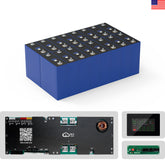

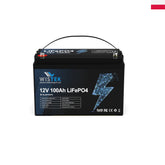
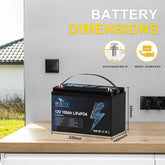
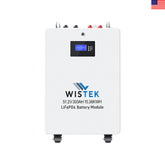
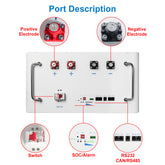
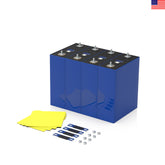
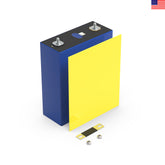
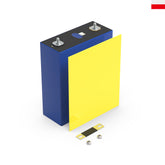

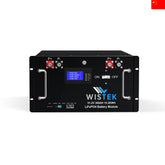
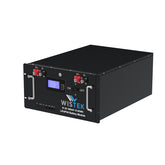









Leave a comment
All blog comments are checked prior to publishing